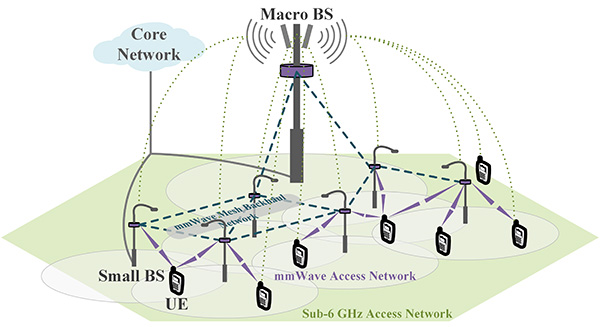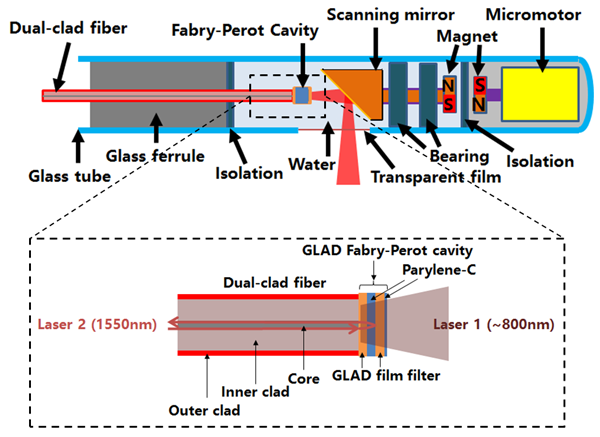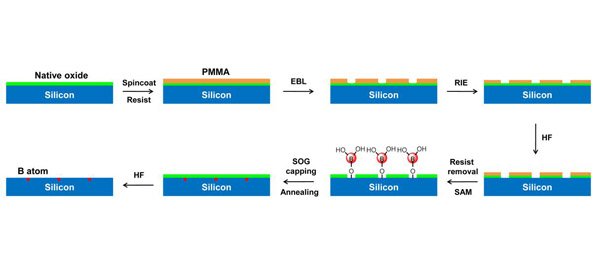The National Natural Science Foundation of China (NSFC) has recently announced the 2017 list of funded projects. The University of Michigan-Shanghai Jiao Tong University Joint Institute (UM-SJTU JI) had a total of four funded projects, including two Young Scientist Projects and two General Projects.
The two General Projects are “Research on mmWave-Based Hybrid Mesh Networking for 5G Ultra-Dense Cellular Networks” proposed by Professor Xudong Wang and “Focusing-free photoacoustic endomicroscopy based on a miniature fiber photoacoustic imaging probe and a mirrored synthetic aperture” proposed by Professor Sung-Liang Chen respectively, with 660,000 yuan of funding each. The two Young Scientist Projects are “Channel Modeling Simulation Platform Development and Characteristic Analysis for Wireless Communications in the Terahertz Band” proposed by Professor Chong Han and “Ordered and Controllable Doping of Dendrimer-Like Boron Polymers on Silicon Surface” proposed by Dr. Huimin Wen respectively, with 260,000 yuan of funding each.

So far there has been no effective methodology to leverage mmWave to accomplish flexible and efficient ultra-dense cellular networking for 5G networks. Professor Wang’s project aims to investigate networking mechanisms, algorithms and protocols for mmWave-based ultra-dense cellular networks, and ultimately develop a complete mmWave-based networking framework for ultra-dense cellular networks. This project starts with a unique design of heterogeneous networking architecture, based on which a complete methodology for mmWave-based ultra-dense cellular networking is established. A simulation platform will be developed, through which the research results of this project are validated.
 “Focusing-free” photoacoustic endomicroscopy
“Focusing-free” photoacoustic endomicroscopy
Photoacoustic imaging is a fast-developing novel biomedical modality, in which photoacoustic endoscopy has become hot research topics in the past few years. Professor Sung-Liang Chen proposes to study “focusing-free” photoacoustic endomicroscopy, making breakthroughs with a miniature fiber photoacoustic imaging probe and a mirrored synthetic aperture. Together with circular synthetic aperture focusing technique and deconvolution algorithm, high resolution and large DOF can be obtained simultaneously, thus realizing “focusing-free” photoacoustic endomicroscopy.
 Terahertz spectrum
Terahertz spectrum
Terahertz (0.1-10 THz) band communication is envisioned as a key technology to satisfy the increasing demand for future ultra-high-speed wireless links in 5G and beyond 5G cellular systems. Professor Han proposes to develop sophisticated channel models for the entire THz band. By leveraging the analytical and statistical methods, he will develop the hybrid channel model, the time-varying channel model and the three-dimensional ultra-massive MIMO channel model. Characteristics in the THz band will be analyzed based on the developed models and simulation platform. This project will make a scientific breakthrough and establish theoretical foundations for wireless communications in the THz band. Preparation of Single Boron Atom Doping Device
Preparation of Single Boron Atom Doping Device
Manipulating a single or a few dopant atoms at a large scale is not only a key solution to the threshold voltage drifting of deep nanometer scale CMOS transistors caused by the randomness of ion implantation, but also an important technology for developing new devices based on single atoms. Dr. Wen proposes to utilize hyper-branched polymerization of glycidol to synthesize boron-containing macromolecules 1 and 2 with a large number of hydroxyl chemical groups at their terminals. The main purpose of this project is using molecular self-assembly and micro/nano fabrication technologies to achieve single-atom devices with ordered and controllable boron doping, fabricate single-atom transistors with a new prototype and provide novel technique and approach for the further development of micro-/nano-electronic devices.
In recent years, JI has attached great importance to the development of scientific research, taking a number of measures to motivate the faculty to participate in research and assist in the NSFC applications. Each year, many JI projects have secured funding.
NSFC aims to promote China’s scientific and technological reform and change the scientific research funding system. It focuses on funding researchers from universities and scientific research institutions with good research strength. Based on the principle of supporting basic research, NSFC has also gradually considered talent programs and environmental conditions. The fund allows scientific and technical personnel engaged in basic research within the scope of funding to choose independent topics, to carry out innovative scientific research and to promote the balanced, coordinated and sustainable development of various disciplines. The Young Scientist Fund mainly supports young researchers to carry out basic research work, cultivate their ability to carry out independent innovative research and infuse new blood into China’s basic research.





